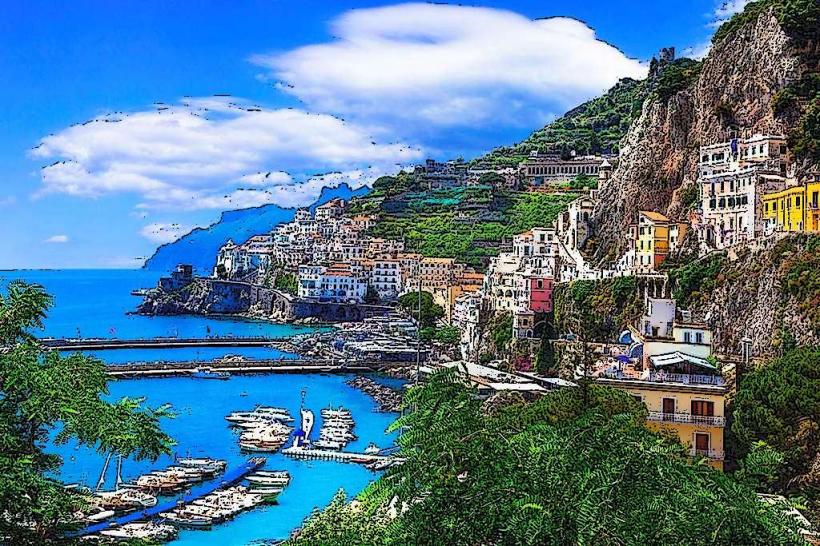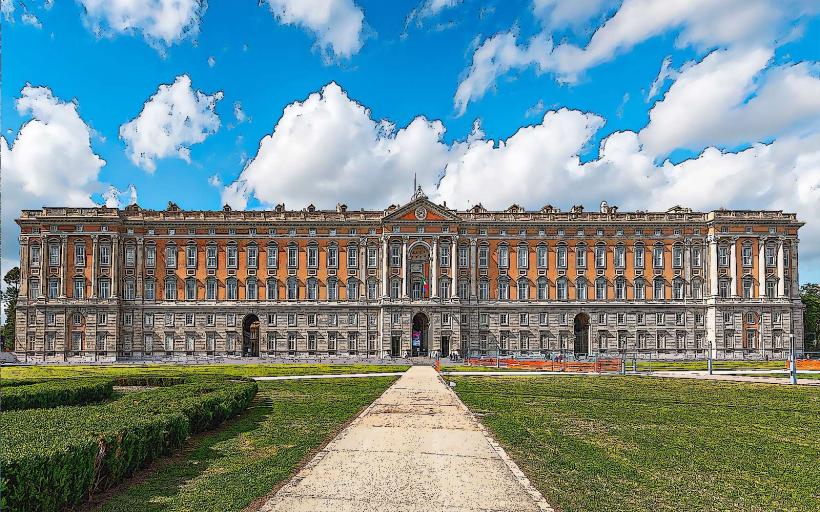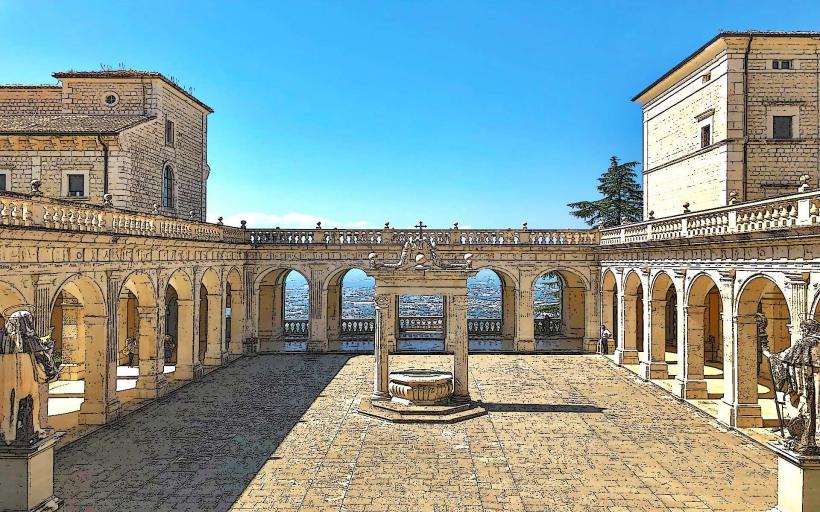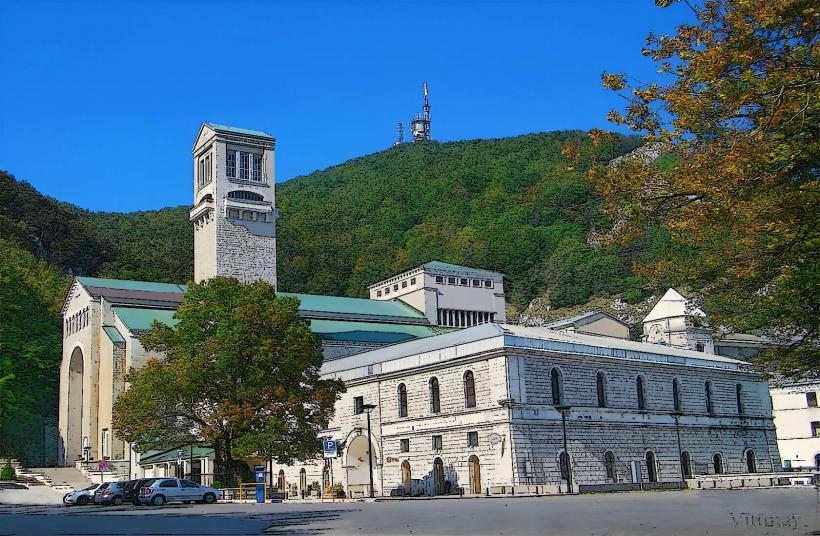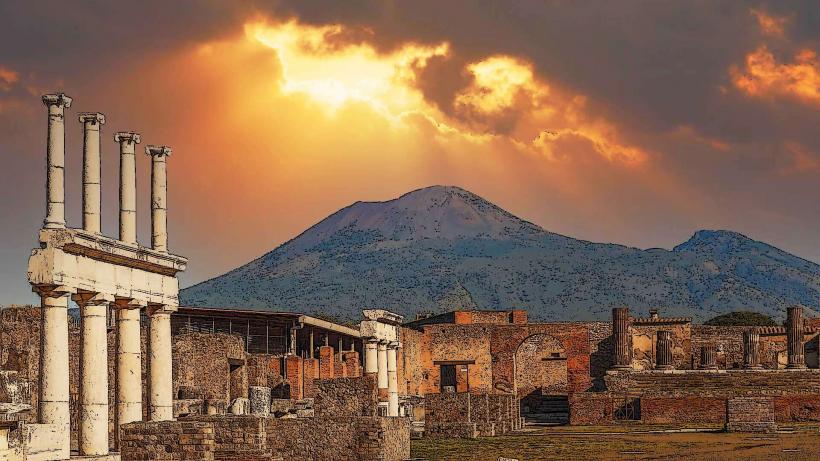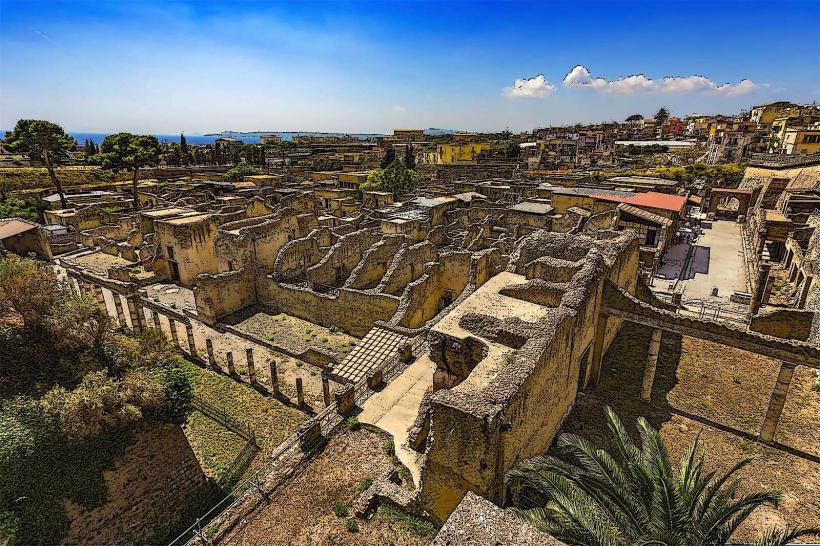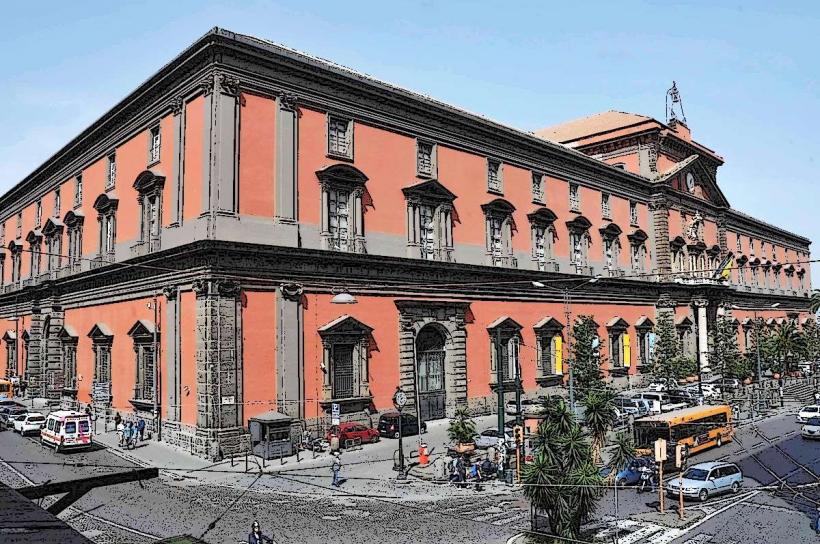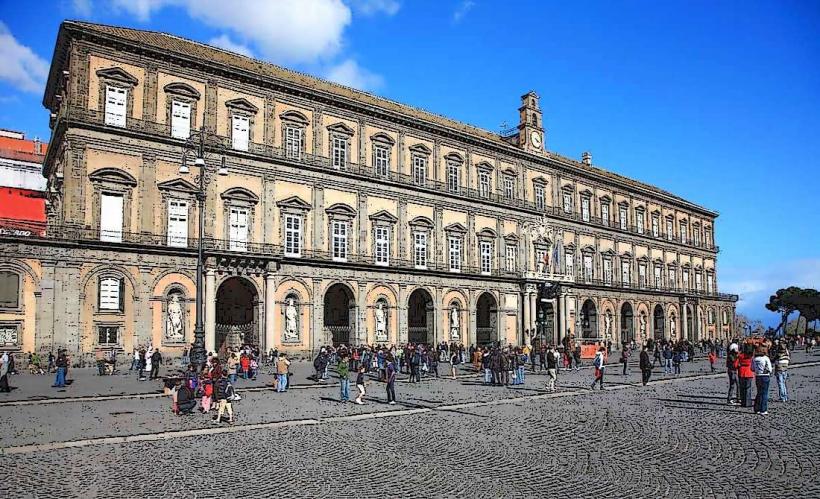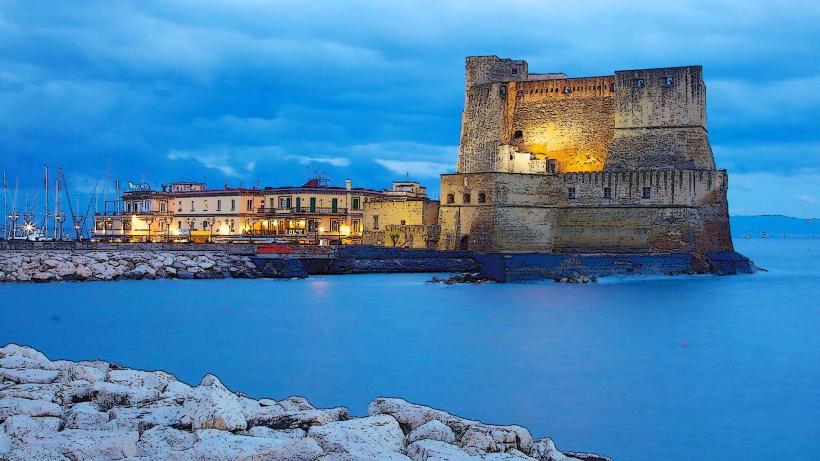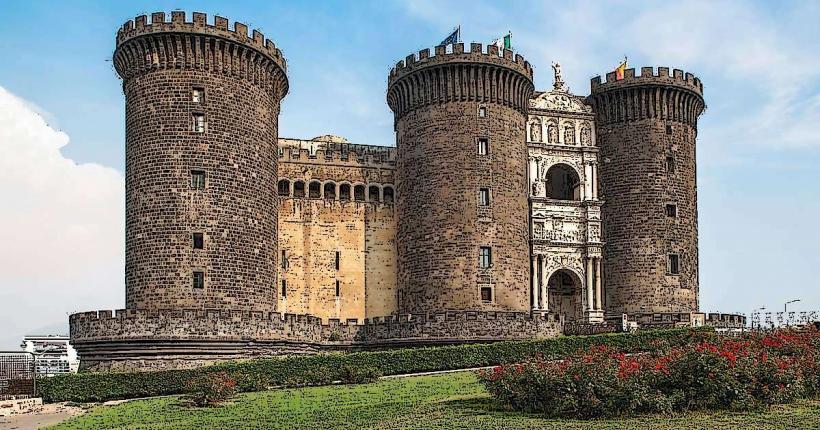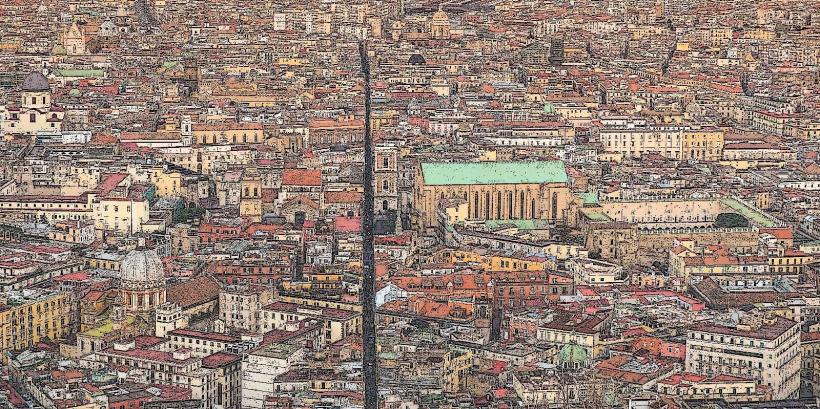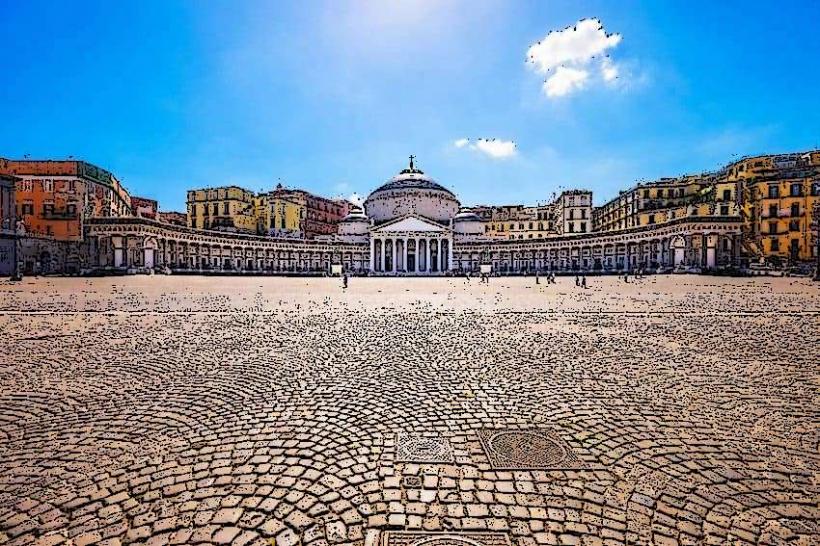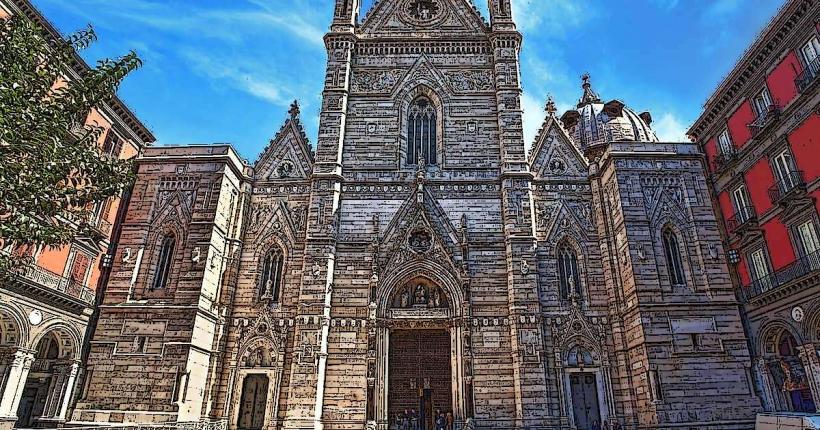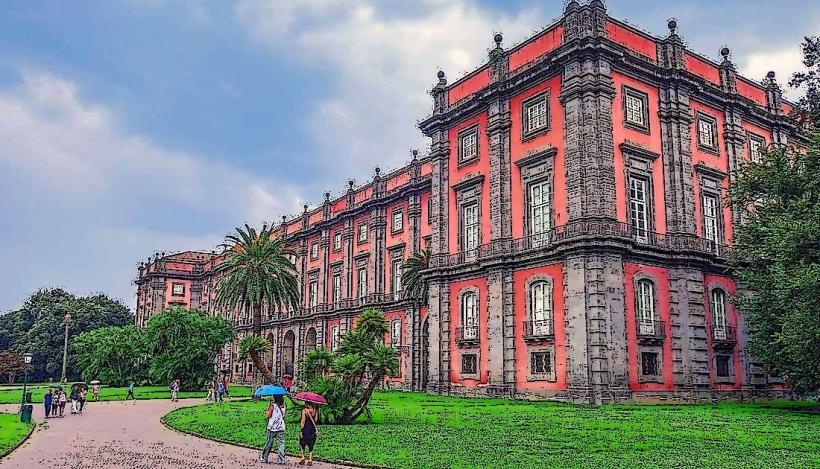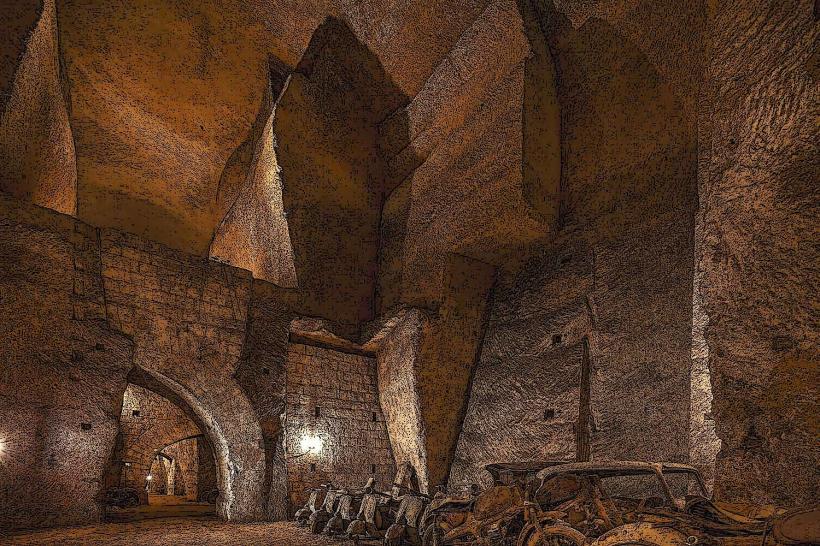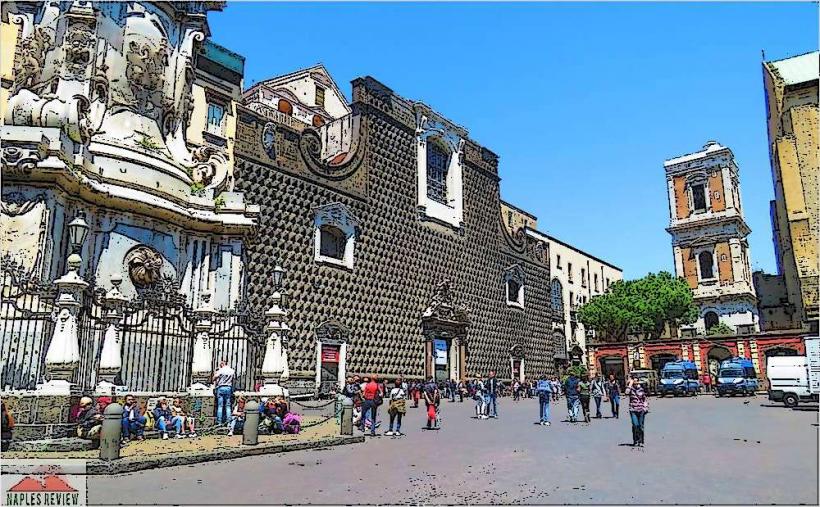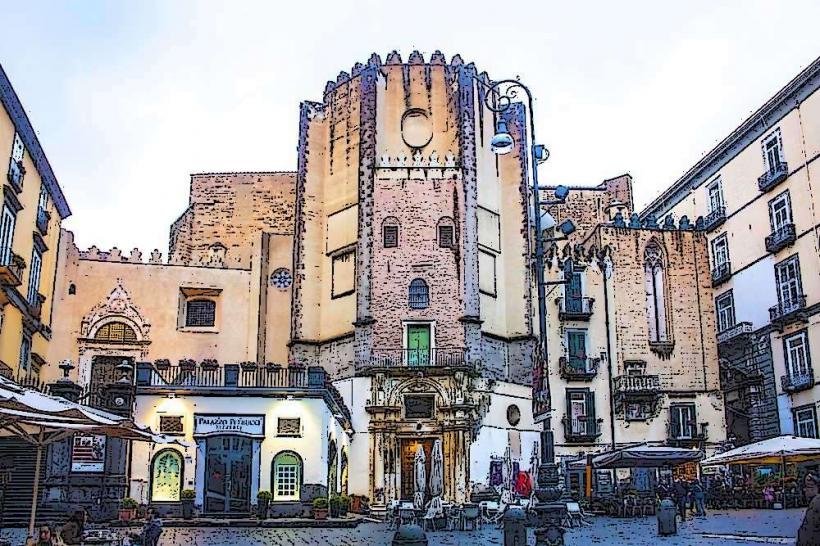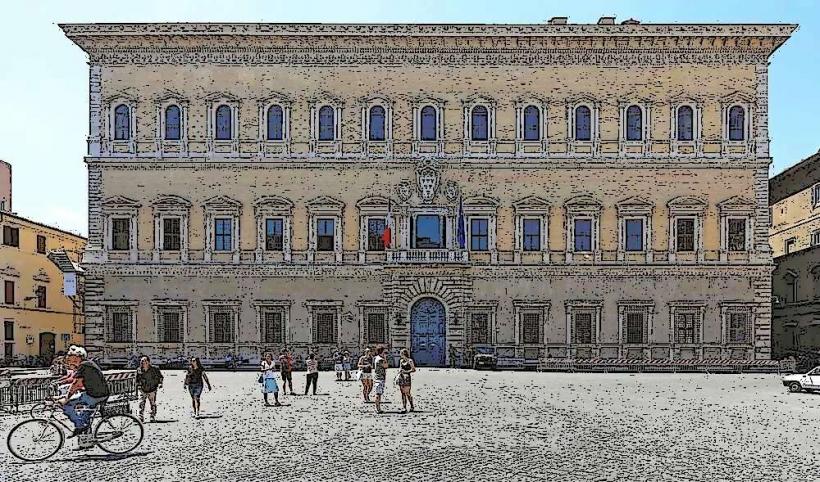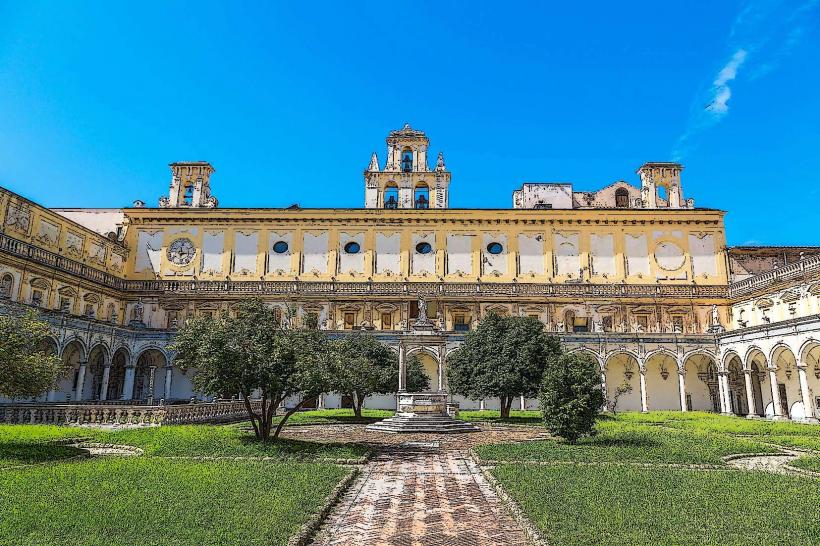Information
Landmark: Mount VesuviusCity: Naples
Country: Italy
Continent: Europe
Mount Vesuvius is one of the most famous and active volcanoes in the world, located on the Bay of Naples in southern Italy. Known for its catastrophic eruption in 79 AD that buried the Roman cities of Pompeii and Herculaneum, Vesuvius has been an object of scientific study, tourism, and myth for centuries.
1. Geographical Location
- Location: Mount Vesuvius is situated on the Italian Peninsula, near the Gulf of Naples, about 9 kilometers (5.6 miles) east of the city of Naples. It dominates the landscape of the region and is easily visible from the surrounding areas, including the Amalfi Coast.
- Height: The volcano stands at an elevation of 1,281 meters (4,203 feet) above sea level. However, its height can vary due to eruptions and geological changes.
- Vesuvius National Park: The volcano is part of the Vesuvius National Park (Parco Nazionale del Vesuvio), which protects the surrounding area and provides controlled access for tourists and researchers.
2. Volcanic Activity and Eruptions
- Active Volcano: Mount Vesuvius is one of the most active volcanoes in Europe, with its most famous eruption occurring in 79 AD, when it destroyed the Roman cities of Pompeii, Herculaneum, and several other towns around the Bay of Naples.
- Eruption History: Vesuvius has erupted more than 50 times since the 79 AD eruption, with significant eruptions in 1631, 1906, and the most recent eruption occurring in 1944. The volcano’s eruptions have been characterized by explosive pyroclastic flows, lava eruptions, and ash clouds.
- Plinian Eruptions: The eruption of 79 AD is categorized as a Plinian eruption, characterized by large explosive activity and the release of vast amounts of volcanic ash and gases. This eruption caused widespread devastation, particularly to the cities of Pompeii and Herculaneum, and preserved them under several meters of ash and pumice.
3. Pompeii and Herculaneum
- Pompeii: The eruption in 79 AD covered the ancient city of Pompeii in a thick layer of volcanic ash, preserving the city remarkably well. Excavations at Pompeii have uncovered a wealth of information about Roman life, including buildings, streets, frescoes, and even bodies of people who perished in the eruption.
- Herculaneum: Similar to Pompeii, Herculaneum was also buried, though by a flow of hot ash and mud, which preserved the city to a greater extent, including wooden structures, which were destroyed at Pompeii. Herculaneum remains less excavated than Pompeii but is equally valuable in understanding Roman life.
4. Volcanic Features and Crater
- Summit Crater: The summit of Vesuvius features a crater that is about 500 meters (1,640 feet) wide and 200 meters (656 feet) deep. Visitors can hike to the edge of the crater, where they can observe its geothermal activity and enjoy panoramic views of the surrounding region, including Naples, the Amalfi Coast, and the island of Capri.
- Crater Venting: The volcano has a history of producing both explosive eruptions (involving pyroclastic flows and ash) and effusive eruptions (producing slow-moving lava). Periodically, fumaroles (steam vents) can be observed at the summit, releasing sulfurous gases.
5. Tourism and Accessibility
- Visitor Access: Mount Vesuvius is one of Italy’s most popular tourist destinations. Visitors can reach the summit by a combination of public buses, guided tours, or a steep hike to the top. From the summit, visitors are rewarded with panoramic views of the Bay of Naples and surrounding towns.
- Hiking Trails: Several hiking paths take visitors from the base of the mountain to the crater. These trails range in difficulty but are generally manageable for most visitors with a reasonable level of fitness.
- Vesuvius Observatory: The Vesuvius Observatory (Osservatorio Vesuviano) is located on the southern slope of the mountain. It is one of the oldest volcano observatories in the world and continues to monitor volcanic activity in the region. The observatory plays a key role in early warning systems for potential eruptions.
6. Scientific Study
- Volcanology: Vesuvius has been extensively studied by volcanologists due to its history of explosive eruptions and its proximity to densely populated areas. Researchers monitor the volcano’s activity closely to predict eruptions and mitigate the risks to surrounding communities.
- Monitoring Stations: The volcano is equipped with various monitoring instruments, including seismographs, gas analyzers, and thermal imaging cameras, all of which are used to detect early signs of volcanic activity.
7. Risk and Preparedness
- Volcanic Risk: Due to its location near populated areas, Mount Vesuvius is considered one of the most dangerous volcanoes in the world. An eruption could potentially affect the 1.5 million people living in the surrounding metropolitan area, including the cities of Naples, Torre del Greco, and Ercolano.
- Emergency Plans: The Italian government has developed comprehensive emergency response plans in the event of an eruption, including evacuation routes for nearby cities and ongoing monitoring of the volcano's behavior.
- Evacuation Zones: In recent years, local authorities have mapped out exclusion zones to ensure that vulnerable areas can be evacuated swiftly in case of an eruption.
8. Cultural Impact
- Historical Significance: Mount Vesuvius has had a profound impact on history, particularly because of the destruction of Pompeii and Herculaneum. The eruption preserved these cities, providing invaluable archaeological insights into the daily life of ancient Romans. It has since become a symbol of nature’s power and the fragility of human civilization.
- Art and Literature: Vesuvius has inspired many artists, poets, and writers, who have been captivated by its destructive beauty and dramatic eruptions. Writers like Pliny the Younger documented the eruption of 79 AD, and the volcano has been a subject in the works of artists like J.M.W. Turner.
9. Vesuvius in Popular Culture
- The eruption of 79 AD is one of the most famous natural disasters in history, and Vesuvius often appears in books, movies, and documentaries, symbolizing the unpredictable and devastating power of nature. It is frequently referenced in discussions of ancient Roman history and in stories about catastrophic volcanic eruptions.
10. Conclusion
Mount Vesuvius remains a symbol of both the destructive power of nature and the resilience of human civilization. Its proximity to modern cities, combined with its long history of eruptions, makes it one of the most studied and closely monitored volcanoes in the world. Visitors to Vesuvius not only experience a stunning natural landscape but also walk in the footsteps of history, witnessing the same views that ancient Romans may have known before the catastrophic eruption of 79 AD.

